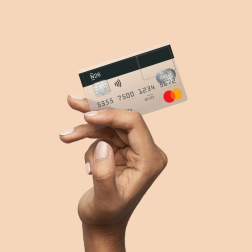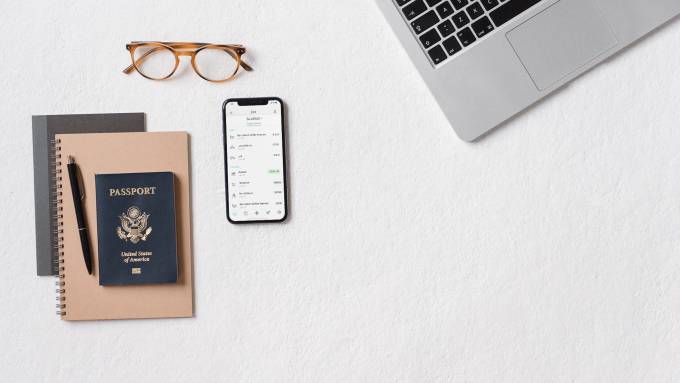
Your guide to VAT in Germany
Confused about the different kinds of value-added tax in Germany? From the varying percentages to who needs to pay, this guide will help you wrap your head around this important sales tax.
5 min read
Here’s a riddle for you: what do your grocery receipt, electricity bill, and theater tickets have in common? The answer is simple—each one of them includes VAT tax! VAT, or “value-added tax”, is applied to the sale of nearly all products and services, and is charged at a rate of either 7% or 19%. But understanding when to charge which percentage—as well as what products or services are exempt completely—isn’t always easy.
If you’re working as a freelancer—or if you’re thinking about becoming self-employed—you’ll need to learn about the different types of taxes in Germany. For example: who has to pay VAT? How do advanced VAT payments to the tax office work? And what constitutes a small business? If these questions have been on your mind lately, read on to learn the basics of VAT—and much more!
What is VAT?
As mentioned, VAT stands for “value-added tax”—or Mehrwertsteuer in German, though it’s more common to call it sales tax, or Umsatzsteuer. This is a form of excise tax, meaning that it’s added to the price of goods, products, and services, and then passed on to the tax office. Companies can offset this against their VAT liability as so-called input tax (Umsatzsteuerschuld). This means that you can reclaim the taxes you owe the tax office by deducting your input tax.
The terms value-added tax, sales tax, and input tax therefore refer to the same type of tax, just from different perspectives. Ultimately, it’s the end consumer who bears the actual tax burden, with companies or freelancers acting as collection agents.
There are three different types of VAT:
- VAT charged on goods and services related to consumption.
- VAT charged on products. Here, the VAT paid on capital goods is not offset.
- VAT charged on income. Here the VAT paid is only offset against the loss in value.
The bank you'll love

How does the VAT work?
To explain how VAT works, let’s look at an example. Imagine you’re planning on buying some new shoes. You head out to do some shopping and find the perfect pair in a nearby store.
Now, let’s rewind back a few months. Before the shoes arrived at the shop, the retailer had to purchase the shoes directly from the manufacturer. For argument’s sake, let’s say they cost €50 netto (before tax) plus 19% VAT (€9.50). This means that the retailer paid €59.50 total for the shoes. Now, the manufacturer doesn’t keep all the money, but rather passes it on the €9.50 VAT they received from the retailer to the tax office.
So, now the retailer sells the shoes for €100 plus 19% VAT (€19)—€119 in total. Now, they’ve paid €9.50 VAT to the manufacturer, but receive €19 VAT when you purchase the shoes.
Now here’s where it gets interesting: the deduction system allows the retailer to deduct the VAT they paid to the manufacturer from the VAT they received from you (€19-€9.50=€9.50). This means the retailer has to transfer €9.50 to the tax office when they do their next VAT declaration.
When is the VAT applied?
In Germany, nearly all goods and services charge 19% VAT. The reduced rate of 7% applies to products and services for basic needs.
It’s not always entirely clear how decisions about what constitutes a “basic need” are met—cow's milk, for example, is taxed at 7% while soy milk or lactose-free milk is taxed at 19%. A full list of all items eligible for the reduced 7% can be found in the Umsatzsteuergesetz (§12 UStG).
And here’s a sample of what you can expect:
- Food and beverages
- Books and newspapers
- Tickets for public transportation
- Art and culture offers (e.g. tickets for the theater, cinema, concerts, museums, zoos, and some creative services)
- Agricultural,forestry products, and animal feed
In rare cases (e.g. for postage, insurance, and credit brokerage), no VAT applies in Germany. Medical treatments, such as a visit to the family doctor, are also exempt from tax because they do not count as consumption.
Who needs to charge VAT?
In general, the obligation to charge VAT applies to everyone that carries out an independent commercial or professional activity independently. In addition, company invoices or receipts must show the net price, the amount and percentage VAT charged, and the total (brutto) amount.
However, if your sales in the past tax year equaled less than €22,000 and are not expected to exceed €50,000 in the current tax year, you can register with the tax office as a small business owner and are considered exempt from sales tax. This means that you don't have to collect any taxes from your customers and therefore don't have to pay it.
The topic becomes especially important when you are doing your tax declaration as a freelancer. But don’t worry, we’ve got lots of useful tips for tackling your taxes here.
The VAT in Europe
The VAT rates in Europe are as different as the countries themselves. Though in most European countries, VAT hovers around 20%, there are some disparities. In Hungary, for example, VAT is 27%, while in Greece it’s 24%. In Spain VAT is 21%, but in Switzerland it’s only 7.7%.
In Austria, in addition to the standard rate of 20%, two reduced tax rates apply:
- 10% for groceries, apartment rentals, and tickets for public transport
- 13% for stays in hotels or guesthouses, cinema tickets, and works of art
And, there are also two reduced VAT rates in Switzerland: the reduced rate at 2.5% and the so-called special rate for accommodation at 3.7%. Denmark is an outlier, offering no reduced VAT rates at all.
The bank you'll love

Your money at N26
Are you a freelancer looking to organize your finances the easy way? Then look no further than our N26 Business accounts. Open your account within minutes and start using your virtual card (Mastercard) instantly! N26 Insights keeps track of your business spending so you don’t have to, with every transaction automatically categorized, making expense sorting easier come tax time. Plus, all premium accounts come with up to 10 Spaces sub-accounts, where you can stash your VAT and other taxes you’ll owe the Finanzamt. Find the N26 account that fits you best.
By N26
Love your bank
Your guide to German inheritance tax
7 min read
Related posts
These might also interest youYour guide to tax deductions in Germany for 2023
Filing your tax return in Deutschland? Find out which expenses are tax deductible. Plus, learn about a practical tool designed to make your 2023 tax return a breeze.
How to submit a tax declaration in Germany
Filing your taxes can be stressful, especially if you’re not familiar with the German tax system. We’ve put together this simple guide to walk you through it.
Tax returns in Germany — what are the deadlines in 2024?
Not sure exactly when you’ll need to submit your tax return? Learn everything you need to know about the 2024 submission deadlines.


